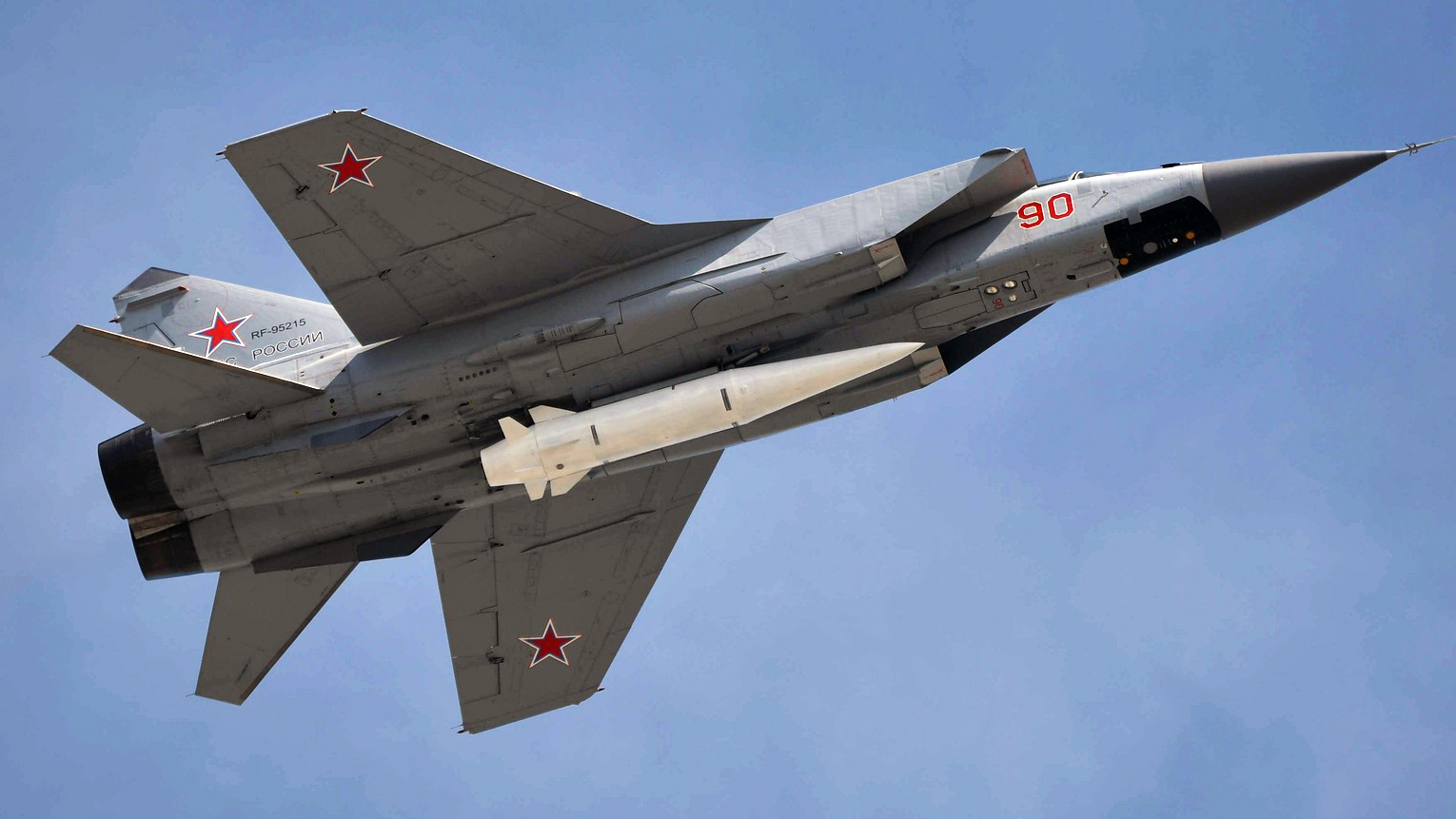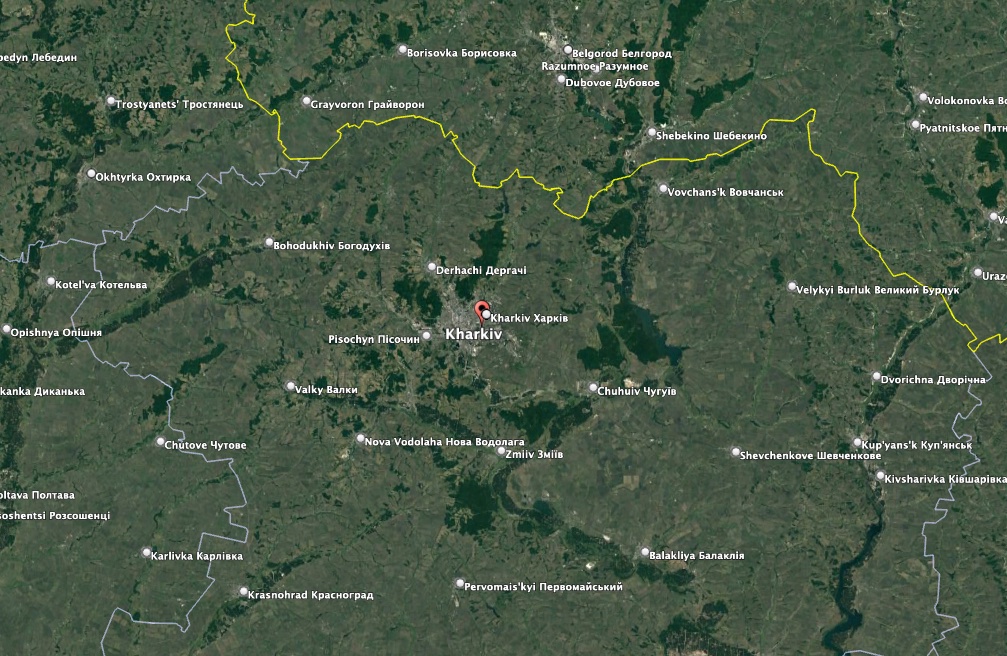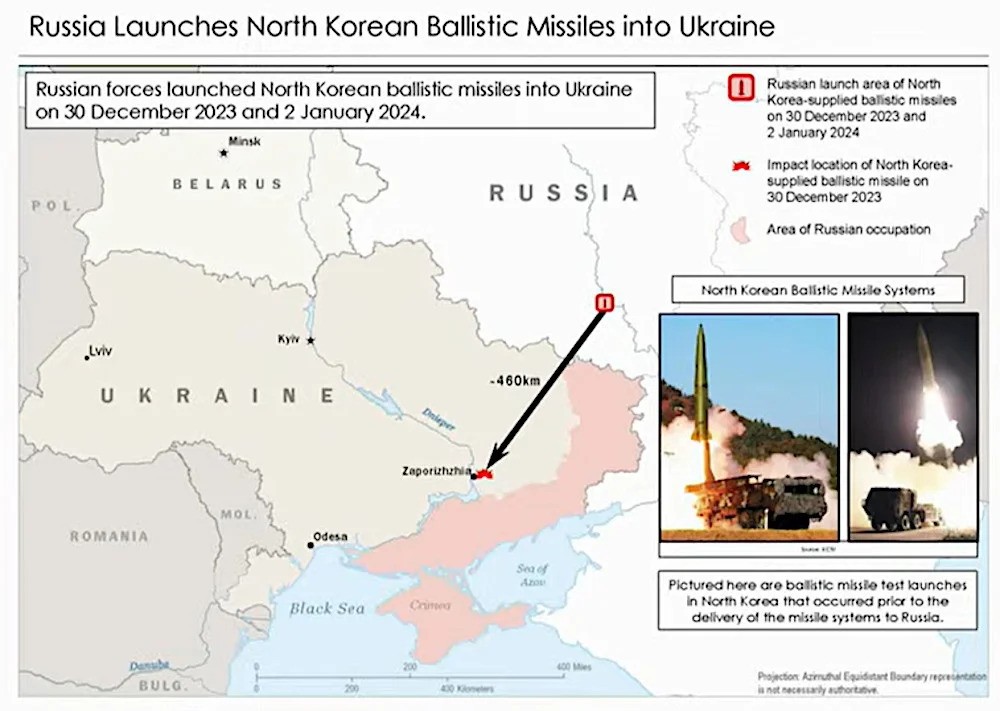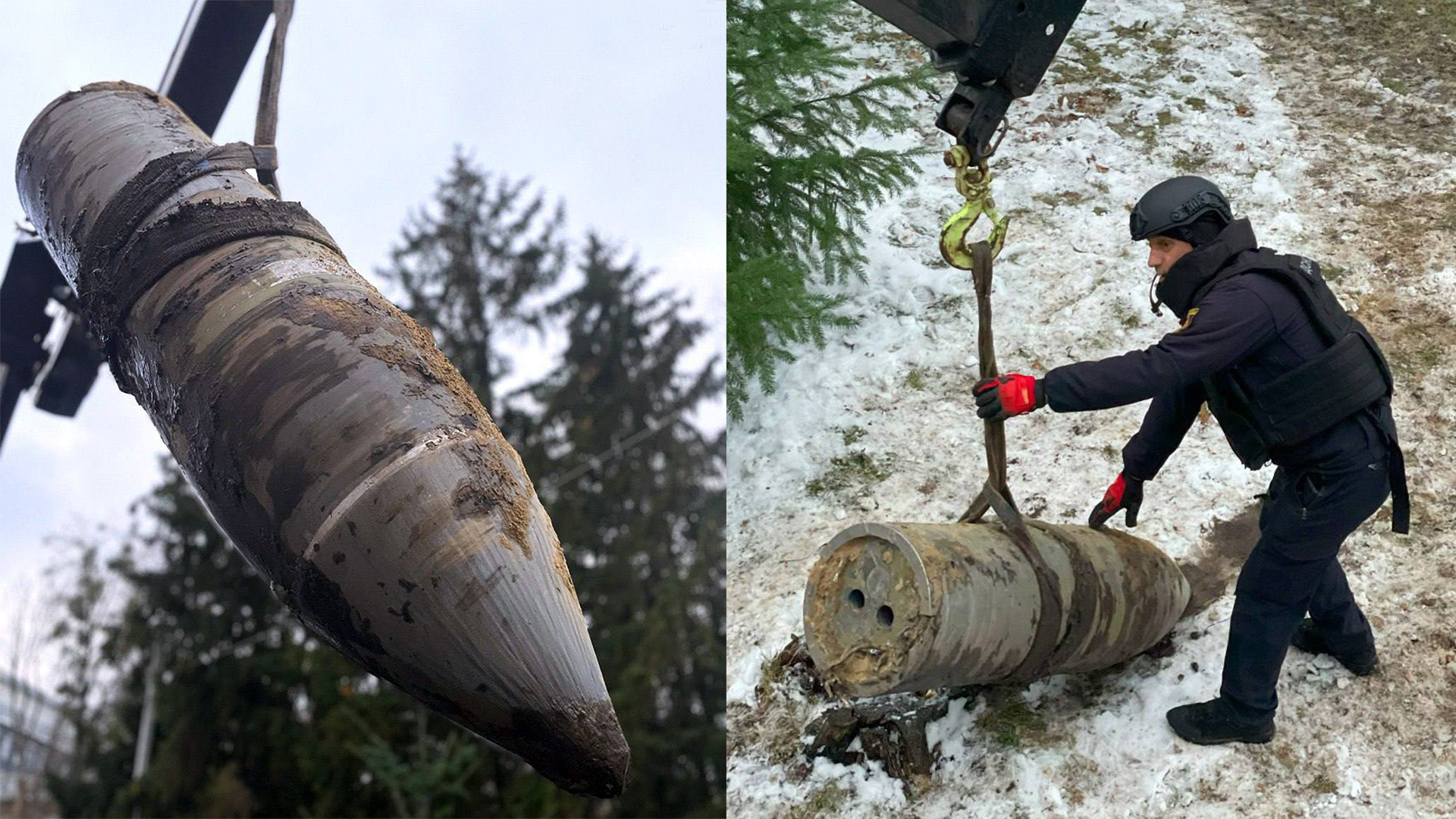Ukrainian sappers have been very busy during this conflict and on Friday found themselves working to disarm the warhead of a Kh-47 Kinzhal air-launched ballistic missile. It was one of 10 that were claimed to have been shot down over Kyiv on January 2nd.
The Mobile Rescue Center’s explosive ordnance disposal team (DSNC) from Ukraine’s State Emergency Service (SES) worked in Kyiv’s Shevchenkivskyi district to neutralize the warhead, the service said. It published photos showing the excavation of a huge crater and its bomb disposal team carefully removing the large warhead.
DSNC downplayed the challenges of removing the munition.
“Dealing with various types of ammunition, missiles, and improvised explosive devices is a routine task for the DSNС engineers, who are doing it for the safety of the Ukrainian people,” DSNC stated.
Regardless of the DSNC’s nonchalance, finding an intact Kinzhal warhead represents yet another opportunity for foreign material exploitation (FME) of Russian hardware. It will almost certainly be taken apart and examined for insights into its capabilities, manufacturing processes and sourcing, as well as clues on how to improve efforts to defeat it. Much of the data discovered will likely be shared with the U.S. and allies as well, if those countries are not leading the effort already.
The Kinzhal, or “Dagger” missile, has a 480 kilogram (about 1,100 pound) high-explosive warhead and was designed to be launched from MiG-31 Foxhound interceptors. The War Zone was the first outlet to identify it as a modified Iskander-M tactical ballistic missile adapted for air-launch. The MiG-31’s ability to reach high-speed and high-altitude prior to release gives Kinzhal a major boost in range and speed over the ground-launched Iskander. It also can modify its trajectory outside of a traditional ballistic arc. This and its hypersonic (or near hypersonic, depending on the flight profile) terminal velocity make it challenging to intercept.

The Kinzhal was part of a massive and deadly barrage fired by Russia. As we reported, in addition to the 10 Kinzhals, the latest wave also consisted of 70 air-launched cruise missiles, including Kh-101s, and three ship- or submarine-launched Kalibr cruise missiles. The Ukrainian Air Force said that its air defenses destroyed all the Kinzhals and Kalibrs as well as 59 of the subsonic air-launched cruise missiles.
Ukrainian officials say the attack killed two in Kyiv and injured nearly 30 others there and the surrounding areas. In Kharkiv, one woman was killed and more than 40 people were injured. All told at least five people were killed and 115 injured across Ukraine in the strikes.
Russia meanwhile still has the ability to continue its domestic missile production despite global sanctions. It has also received a recent influx of North Korean short-range ballistic missiles which you can read more about later in this story. Given all that, the sappers of the DSNC will have plenty of opportunities to continue their life-saving work.
Before diving into more developments from the conflict in Ukraine, The War Zone readers can review our previous coverage here.
The Latest
The governor of Kharkiv Oblast on Friday pushed back against assertions that a Russian offensive to attack Kharkiv city could come as early as Jan. 15. That’s a date posited by the Telegraph, citing an anonymous source.
“Both Russian and Ukrainian forces have been jostling for better positions along the front line that straddles the villages of Kupiansk, Svatove and Kreminna, close to the border of the Kharkiv region,” the publication wrote. “Moscow has concentrated its resources in the area in a bid to push towards the Ukrainian-held towns of Kreminna and Lyman, which were both occupied by Russian forces until Kyiv launched a lightning counter-offensive in September 2022.”
However, Oleh Synehubov said on Telegram Friday said while the Russians continue to pound the city and surrounding areas with missiles and drones, there are no immediate signs that an all-out assault is imminent.
“The enemy is indeed carrying out unprecedented mass shelling of settlements near the border – Liptsi and neighboring villages,” Synehubov said. “Over the past two days, Russian troops have fired dozens of S-300 missiles at these settlements. Residential buildings and other civil infrastructure objects were hit.”
“In order to talk about any offensive or plans of the enemy, he must concentrate his military units in one direction or another,” he added. “Currently, there is no such concentration. However, the situation can change every minute and we are, of course, closely monitoring it.”

Elsewhere, the battlefield has largely remained stagnant, with Russia making some small gains near Avdiivka in Donetsk Oblast and Kreminna in Luhansk Oblast, according to the Institute for the Study of War.
Russia says it air defenses downed dozens of Ukrainian drones in occupied Crimea and southern Russia on Friday as Kyiv continued its strategy of targeting the Moscow-annexed peninsula, The Associated Press reported.
Air raid sirens were heard in Sevastopol, the largest city in Crimea. In addition, traffic was suspended for a second day on the twice-attacked Kerch Bridge, Vladimir Putin’s prized $4 billion span connecting the illegally occupied Peninsula with Russia’s southern Krasnodar region. The bridge is a crucial supply link for Russia’s war effort.
The Russian Defense Ministry (MoD) said its forces intercepted 36 drones over Crimea and one over Krasnodar. A Ukrainian Neptune anti-ship missile was also destroyed over the northwestern part of the Black Sea, the MoD claimed.
The Kremlin-connected Rybar Telegram channel reported that a Russian MiG-31 Foxhound intercepted the Neptune, which it says was launched from Odesa early Friday morning. Neither the Russian MoD nor Rybar specified which variant, but it was most likely the land-attack version. That’s a weapon we were the first to write about last August. It was initially used to hit a Russian S-400 air defense system on the western most part of the occupied Crimean peninsula.
The attacks today followed several from yesterday.
Ukraine destroyed a Russian command center near Sevastopol on Thursday, the Ukrainian RBC news outlet reported. The attack took place about 3 p.m. local time. Ukrainian Air Force Commander Lt. Gen. Mykola Oleshchuk noted on Telegram that the operation was carried out with the help of pilots. He posted a video, originally published by the Crimean Wind Telegram channel, claiming to show plumes of smoke resulting from that attack.
Mykhailo Razvozhaev, the Russian-installed occupation leader of Sevastopol, denied anything was hit. He said that air defenses repelled a large-scale Ukrainian missile attack there. It was “the most massive in recent times,” he said on Telegram. He added that there was scattered damage as the result of downed munitions.
There were more explosions heard later on Thursday in different cities of Crimea, RBC reported, including Saki. RBC did not provide details about the explosions in Saki, home of a Russian airbase. However, a regional official said several Ukrainian air attacks on the area had been repelled, according to Reuters. That base has been struck several times by Ukraine, as we have reported in the past.
Despite the explosions, The War Zone could not immediately find any obvious signs of damage there.
The attack on Saki sparked wild, unconfirmed speculation on social media that Russian Chief of Staff Gen. Valeri Gerasimov was killed there. The Kyiv Post shot down those reports on Friday and Lt. Gen. Kyrylo Budanov, head of the Defense Intelligence Directorate (GUR), told us “we think [news about Gerasimov] is fake.”
Ukrainian bloggers and unofficial Telegram channels said Russian air defense units had been in action repelling Ukrainian attacks in the Kerch strait and in the Russian Black Sea port of Novorossiysk, Reuters added.
The Russian MoD had earlier reported that its forces had destroyed 10 incoming missiles over the peninsula.
Ukraine also said it destroyed a Russian ammunition depot near Pervomaiske in Crimea on Thursday.
In addition, there are claims by the Atesh partisan group in Crimea that there was a Ukrainian strike in Yevpetoria where the Russians had moved an unspecified radar system. The War Zone cannot independently verify any of these claims.
Ukrainian pilots are expected to complete their F-16 training in the U.S. sometime this year, the Pentagon’s top spokesman told reporters Thursday.
“That training does continue in Arizona,” said Air Force Maj. Gen. Pat Ryder. “Depending on the skill level of the pilot, that can range from five to eight months. And so, I would expect sometime later this year we’ll start to see those pilots graduate. But I don’t have any specifics for you.”
As we previously reported, that training began in in October at Morris Air National Guard Base in Tucson, Arizona.
Meanwhile, Norway has completed the transfer of two Vipers to Denmark, adding to the stable of jets being used to train Ukrainian pilots there.
Ukraine’s Defense Intelligence Directorate says it carried out a sabotage raid just over the border in Russia’s Belgorod Oblast.
The GUR said that according to its intelligence, Russian military leaders planned an inspection of positions in the Graivoron district of the Belgorod region “due to dissatisfaction and complaints of the personnel there about poor service conditions.”
“In order to inflict losses on the enemy and worsen his morale and psychological state,” GUR special operations forces “mined the only road used by the invaders in the specified area, and also attacked a Russian platoon stronghold. As a result of the fire raid using small arms and mortars, as well as the detonation of Ukrainian mines, the enemy suffered losses. The number of eliminated and wounded occupiers is being specified.”
While we cannot confirm the GUR claims, this is not the first time forces supporting Ukraine say they have raided Graivoron. In May 2023, pro-Ukrainian Russian partisans say they staged an incursion there. You can read more about that in our story here.
Meanwhile, Belgorod Oblast Gov. Vyacheslav Gladkov complained on Telegram about scores of residents being injured and property damaged as the result of Ukrainian artillery and drone strikes. They have been so intense that evacuations are being arranged.
“I see several requests on social networks where they write: ‘We are scared, help us go to a safe place,'” he said on Telegram. “Of course we will help! Several families have already been transported. We do everything that depends on us.”
A top Ukrainian presidential advisor on Friday confirmed claims made yesterday by the White House that Russia has been using North Korean-provided short-range ballistic missiles to attack Ukrainian cities.
“There is no longer any disguise… As part of its outright genocidal war, the Russian Federation for the first time struck at the territory of #Ukraine with missiles received from… North Korea. The masks are completely off,” wrote Mikhail Podolyak on Twitter.
In our story about the White House claims, we wrote that during a press briefing, White House National Security Council spokesman John Kirby displayed a graphic including images of launches of North Korean missiles.

They are known in the West as the KN-23 (a picture of which is seen earlier in this story) and KN-24. Public estimates of the maximum ranges of these missiles are around 435 miles (700 kilometers) and 250 miles (400 kilometers), respectively.
The official Ukrainian Defense Express media outlet on Friday wrote that its “analysis of the debris of one of the missiles that was fired at Kharkiv on January 2, 2023, indicates” that it was a KN-23.
Images and video are emerging on social media claim to show some of those strikes and remnants of those missiles. The War Zone cannot independently confirm the accuracy of these claims.
As we have frequently reported, first person view (FPV) drones have become a huge part of this conflict for both sides. However, while Ukraine pioneered the use of these adapted civilian-type drones, Russia is now operates more of them and the gap is increasing. As a result, Kyiv has launched a program designed to turn interested Ukrainians into FPV builders
“From now on, every Ukrainian can learn to independently assemble FPV drones for the military,” Mykhailo Fedorov, Minister of Digital Transformation of Ukraine, said on Telegram. “You can take online training on it, choose the drone you want to assemble, and submit it for testing. If the testing is successful, the drone will go to the front, and you will be able to review how the ‘bird’ worked on Russian targets. You can also donate to drones or become a supplier of spare parts, the platform has the necessary list. That is, engineers will be able to order parts for their drones from you.”
Fedorov’s announcement follows an extremely ambitious plan we wrote about in December for Ukraine to produce a million FPV drones this year. As we noted, it remains to be seen if Ukraine can reach that overly lofty goal.
Fedorov also announced Ukraine is testing out an unmanned ground vehicle (UGV) called D-21-11, created by members of the Brave1 defense cluster.
“The machine is equipped with an automatic turret and can perform combat tasks,” he said on Telegram, adding that it can be “used for conducting reconnaissance and storming or defending positions.”
“The platform can also be used to safely deliver ammunition or provisions for fighters to hot spots,” he said.
The combat variant of the UGV “has already been successfully tested and has received positive feedback from the military. The developers plan to integrate NATO types of weapons into the robot and strengthen its resistance to enemy anti-aircraft missiles. The team is currently working on scaling production.”
A rare image of a bullpup version of a Soviet-era PKT machine gun has appeared in service with the Ukrainian armed forces. The image below shows the soldier on the right with the weapon apparently kitted out with a custom stock, grip and bipod.
Kyiv’s mobile air defenses have only enough ammunition to withstand a few more powerful attacks but then will need more Western aid, Serhiy Nayev, the commander of Ukraine’s joint forces, told AFP earlier this week.
Late last year, Russia launched its largest missile and drone attacks since the early days of the invasion. It then bombarded the capital and Ukraine’s second-largest city, Kharkiv, on January 2, killing five and injuring dozens.
“The current situation with man-portable air defense systems for mobile air-defense groups is that there is enough ammunition to withstand the next few powerful attacks,” Nayev told the news outlet.
Air defense systems have proven invaluable for both sides, which is why they are so often being targeted. The video below shows Ukrainian special operations forces attacking three Russian Buk air defense systems.
The importance of air defenses cannot be overstated. This graphic below shows just how important they’ve been for Ukraine, which destroyed more than 1,200 drones, nearly 900 cruise missiles, 15 Kh-47 Kinzhals and other assorted aerial threats in 2023. While this is based on the claims of Ukraine’s military, there can be no doubt that a huge number of targets have been engaged over the last year, which has taxed air defense weapon stocks.
The video below shows a futile Russian attempt to advance on Ukrainian positions that results in four of its vehicles being destroyed.
The lead vehicle in the armor column, which appears to be outfitted to clear mines, apparently hits one and explodes. Seconds later, an FPV drone hits the trailing BMP in the column, after which troops scramble out of it as the smoke rises from the stricken vehicle. Meanwhile, the column bunches up. A few seconds later, a tank tries to move around the burning BMP and apparently hits a mine, exploding in flames. As tracers fly overhead, another BMP tries to swing around the already burning armor and suffers a similar fate.
It takes work to learn how to drive a tank, and for these Ukrainian troops, that includes time in a simulator.
Much of this war is being fought in trenches and in the ubiquitous tree lines Ukraine build to stop wind erosion that was damaging crops. This video below shows the perilous nature of that fight for troops who struggle to build foxholes for protection.
As the war in Ukraine drags on toward a third year, the country is facing a challenge of finding enough troops to continue fighting. About 70,000 have been killed so far.
One solution being developed is a new conscription law.
Commander-in-Chief Valerii Zaluzhnyi and Defense Minister Rustem Umerov arrived at Ukraine’s parliament for talks on the new law on mobilization, David Arakhamia, head of President Volodymyr Zelensky’s Servant of the People faction, reported on Telegram on Jan. 4.
The talks are related to the government’s submission of a draft law on mobilization and military service on Dec. 25, which proposes, among other things, to restrict the rights of those who evade military registration and service, the Kyiv Independent reported.
The proposed restrictions include banning those who evade military registration and service from traveling abroad, restricting their rights to drive a vehicle or obtain a driver’s license, and suspending their benefits and services from the state.
The problem of those trying to avoid service has resulted in several scams, including one recently busted.
Ukraine’s SBU security service, the National Police of Ukraine and the Information and Security Service of the Republic of Moldova “neutralized an international criminal group that acted in favor of the Russian Federation.”
The scheme, according to the SBU Telegram channel, involved the illegal trafficking of conscription-age men to Transnistria, a Russian-controlled area of Moldova bordering Ukraine.
The cost of one “escape ticket” was up to $5,000, depending on the urgency of departure. Criminals drove their “clients” to the border with unrecognized Transnistria, and then led them along forest paths outside checkpoints.
As a result of a joint special operation, law enforcement officers detained two gang members in Moldova while they were accompanying a group of evaders, the SBU said. Two more figures were exposed in Odesa, when they were preparing a new batch of potential conscripts to be sent abroad.
Russia, which has seen 315,000 troops killed or wounded according to a recent report, also has a need for troops. To that end, Putin on Thursday signed a decree speeding up a path to Russian citizenship for foreigners who enlist in the country’s military, according to The Associated Press.
The move comes as Moscow is trying to replenish its troops in Ukraine by various methods, including the recruitment of migrants. Russia is a magnet for hundreds of thousands of people frompoorer Central Asian countries, and many of them seek citizenship each year.
Putin first allowed fast-track citizenship for foreigners who sign contracts with the Russian army in September 2022, shortly after announcing a partial mobilization to draft 300,000 reservists for Ukraine.
And finally, Budanov, the head of GUR who turned 38 Jan. 4, received birthday wishes Thursday from an unusual place – Moscow – where he is a wanted man for a wide array of attacks on targets across Ukraine and inside Russia. We sat down with Budanov for an exclusive interview in his hotel room when he visited the U.S. with President Volodymry Zelensky in September. You can read about that here.
That’s it for now. We’ll update this story when there is more news to report about Ukraine.
Contact the author: howard@thewarzone.com
